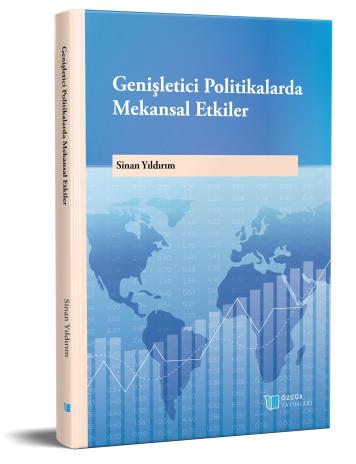
Genişletici Politikalarda Mekansal Etkiler
İndir
Özet
Bir analizde yatay kesitler coğrafi alanlardan oluşmaktaysa komşu birimlerin birbirleri üzerindeki mekânsal etkileşiminin varlığı araştırılmalıdır. Çünkü birbirine yakın olan mekânların, birbirini etkileyeceği düşünülür. Bu çalışmada 1997-2016 yılları arasında Avrupa’da hükümet harcamalarının kişi başı Gayri Safi Yurt İçi Hâsıla büyümesini nasıl etkilediği mekânsal bağımlılığı dikkate alan modeller kullanılarak araştırılmıştır. Neticede kurulan tüm modellerde hükümet harcamalarındaki artışlar ekonomik büyümeyi artırmaktadır. Sabit etkili panel veri, rassal etkili panel veri, sabit etkili mekânsal gecikme, rassal etkili mekânsal gecikme, sabit etkili mekânsal Durbin, rassal etkili mekânsal Durbin, sabit etkili mekânsal hata, rassal etkili mekânsal hata, genelleştirilmiş rassal etkili mekânsal hata ve genel mekânsal modelleri incelenmiştir. Yapılan Hausman sınamaları neticesinde tüm modellerde rassal etkiler modelinin etkin olduğu görülmüştür. Yapılan Lagrange Çarpan (LÇ) sınamalarına göre mekânsal gecikme ve mekânsal hata modelleri ile genel mekânsal model anlamlı bulunmuştur. Bunların içinde en yüksek olabilirliğe ve Lagrange Çarpan (LÇ) test istatistiği değerine sahip olan model hem mekânsal gecikmeyi hem mekânsal hatayı barındıran genel mekânsal modeldir. Mekânsal Durbin modelde ise mekânsal ağırlık matrisiyle çarpılmış açıklayıcı değişkenlerin katsayı tahminleri istatistiksel olarak anlamsız bulunmuştur. Sonuç olarak, Avrupa’da tam istihdam seviyesini yakalamak isteyen politikacılar, hükümet cari harcamalarını artırabilir. Bunun yanında, komşu ülkelerdeki durumu da dikkate almak zorundadırlar. Çünkü mekânsal otokorelasyonu gösteren katsayılar pozitiftir, yani mekânlar birbirine yaklaştıkça birbirinden daha çok etkilenmektedir.

